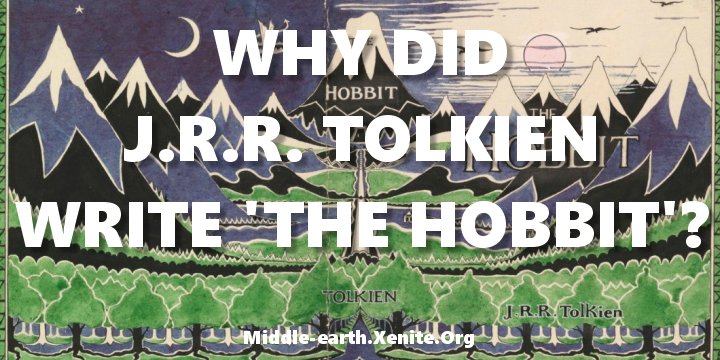
Q: Why Did J.R.R. Tolkien Write The Hobbit?
ANSWER: Most people assume that J.R.R. Tolkien wrote The Hobbit to entertain his children. However, the real answer is more complex than that. According to John Rateliff in The History of The Hobbit, Tolkien probably began developing the original story around the middle of 1930. By January 1933 he was able to pass a full-length manuscript to his friend C.S. Lewis. Rateliff’s analysis of the various explanations of the development of the story includes some references to oral story-telling mixed in with references to Tolkien’s actual writing.
According to Rateliff’s summary of events, decades later Michael Tolkien recalled a selection of names that from which a parody version (perhaps not written down) of the story was shared with the elder Tolkien children. That is, Tolkien seems to have worked at writing the actual story during his free time between teaching seasons and at the same time while sharing the story with his sons also revised it “on the fly”, as it were, for simple amusement.
The early 1930s represent a period of great experimentation for Tolkien. He quickly drew The Hobbit into the world of his evolving “Silmarillion” mythology but also ultimately excised the most immediate references. That is, by the time the story was fully told it was no longer connected to Beleriand and the events of “Lay of Leithian”/”Beren and Luthien”. The story underwent radical expansion and revision, perhaps due to the various interludes when Tolkien could not work on the tale.
So although Tolkien certainly developed the story with his children in mind, he also used it as an opportunity to experiment with new ideas and concepts. He also drew upon new influences for his myth-making, such as (probably) incorporating Slavic names into his growing lexicon. According to Rateliff’s analysis, the Laketown of The Hobbit also represents Tolkien’s only use of High Medieval culture in what eventually became the fictional Middle-earth of The Hobbit, The Lord of the Rings, and The Silmarillion. It may be that Tolkien also began to adopt Gothic and other east Germanic elements into the stories at this time.
Hence, Tolkien wasn’t merely interested in devising a story for his children. He was always making up new stories to entertain them (“The Father Christmas Letters” are contemporary with this period; and Roverandom is slightly older). He appears to have been experimenting with ways of adapting his mythic constructions to further uses, and at the same experimenting with non-English traditions. The heavy Norse influence on the book in terms of characters (Dwarves), places (Mirkwood), and monsters (Trolls) has not escaped notice.
We must conclude that J.R.R. Tolkien wrote The Hobbit as much to satisfy his natural literary curiosity as to create an amusing and entertaining story that enriched his relationship with his children.
# # #
Have you read our other Tolkien and Middle-earth Questions and Answers articles?
